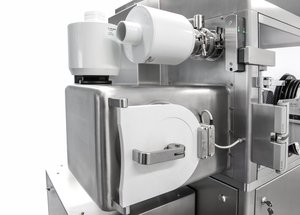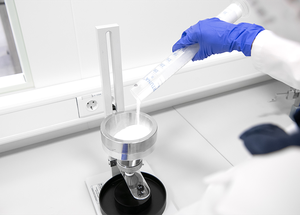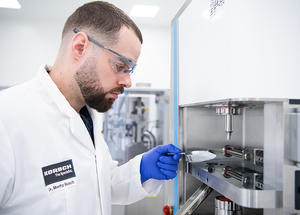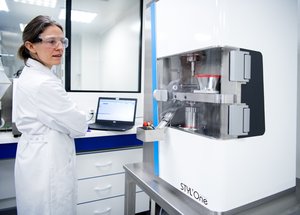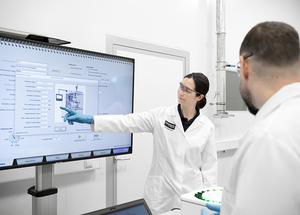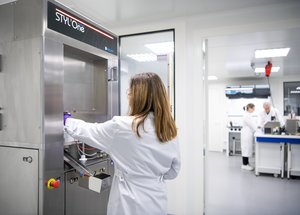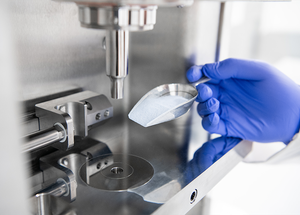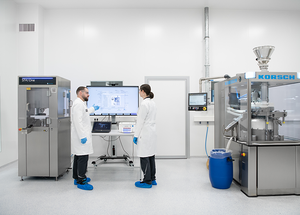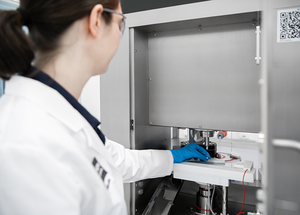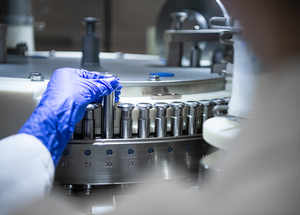Scientific papers
This study outlines an efficient approach that integrates material profiling, Instron uniaxial die-punch testing, and a mathematical model for roller compaction to guide the formulation and process development of a roller-compacted drug product. True density, compression profiling, and frictional properties of pre-blend powders serve as inputs for the predictive roller compaction model. Flow properties, particle size distribution, and assay uniformity of roller compaction granules are utilized to determine formulation composition and ribbon solid fraction. Employing less than 10 g of a model drug compound for material profiling, roller compacted blend in capsule formulations with suitable excipient ratios were developed at both 1.4% and 14.4% drug loadings.
Following this, scale-up batches were successfully produced based on the roller compaction process parameters obtained from predictive modeling. The measured solid fractions of roller compaction ribbon samples from the scale-up batches closely aligned with the target solid fraction from the modeling. This approach offers significant advantages, including material and batch savings, in the development of a roller-compacted drug product. Such advantages are particularly valuable in early development stages where the drug substance is often limited, and timelines are demanding.
Comments
No comments posted yet.
Add a comment



